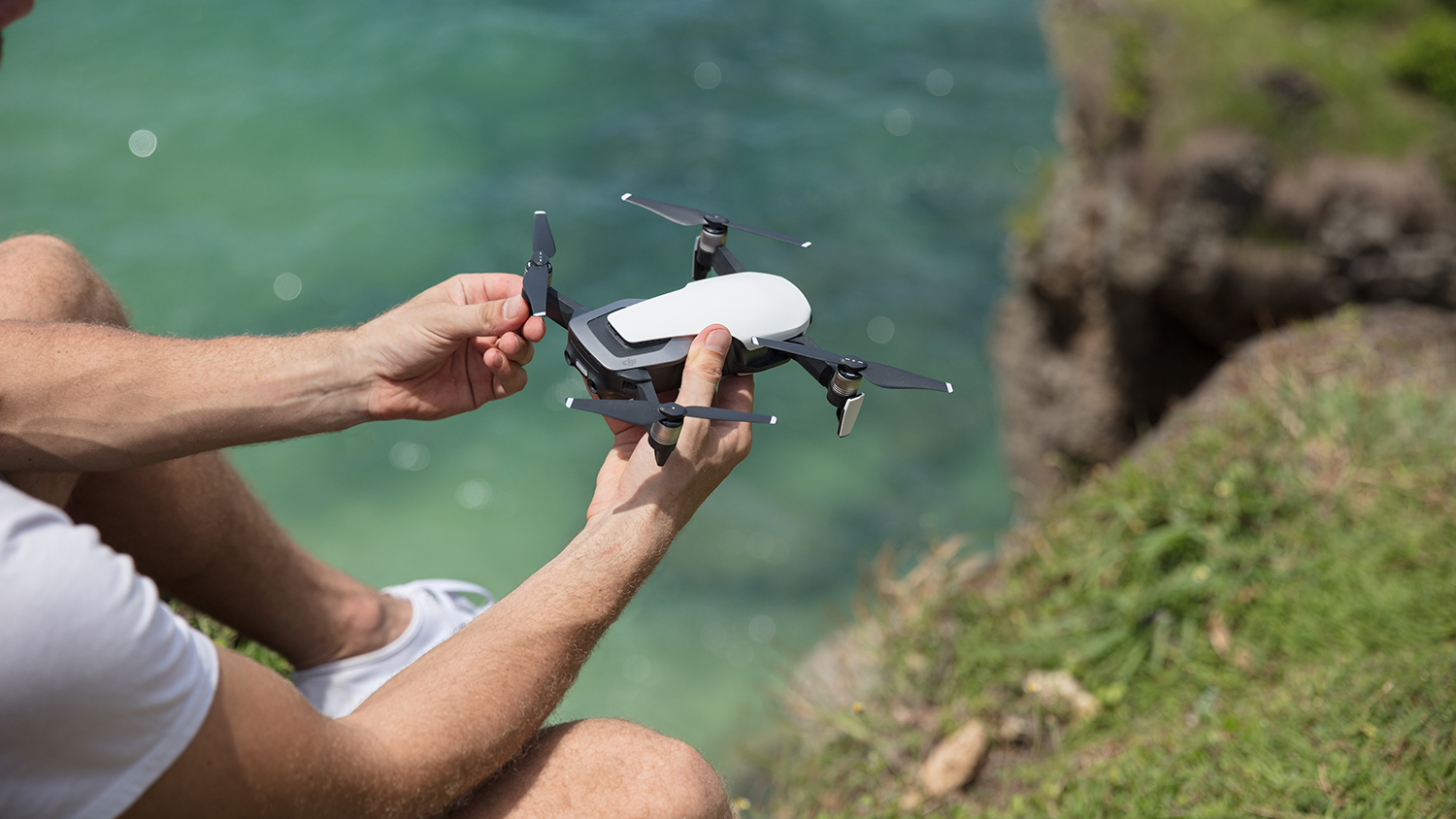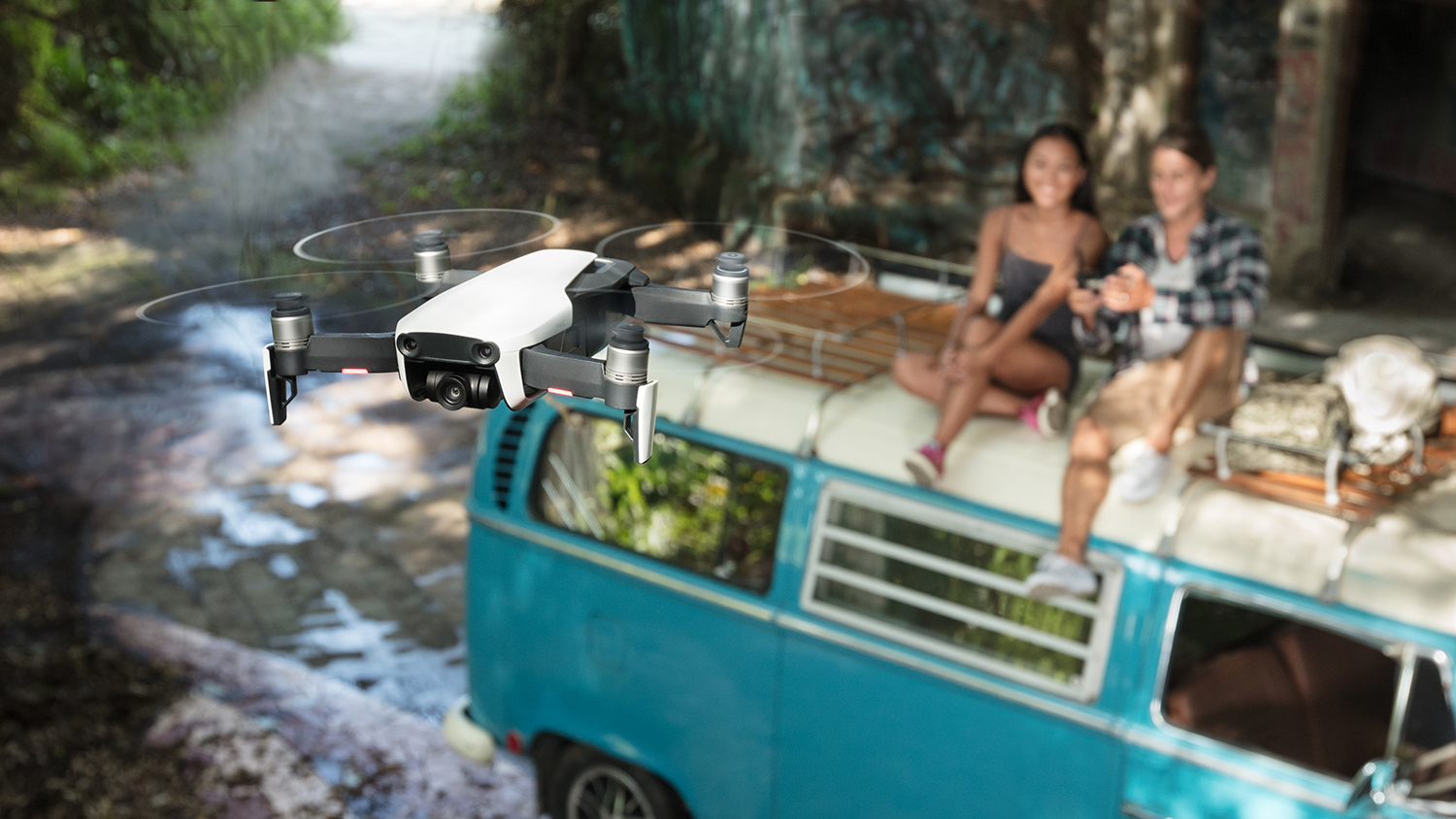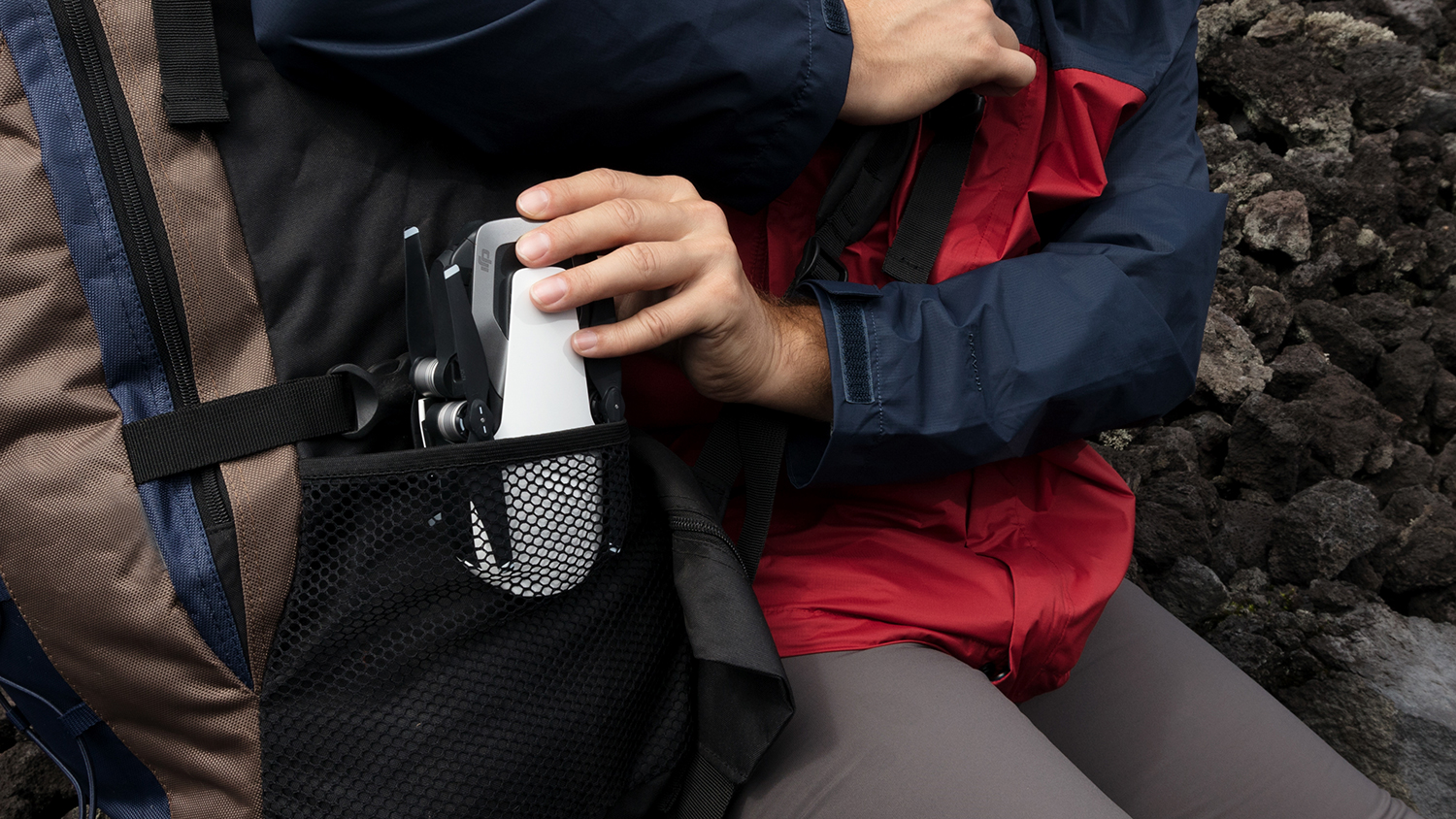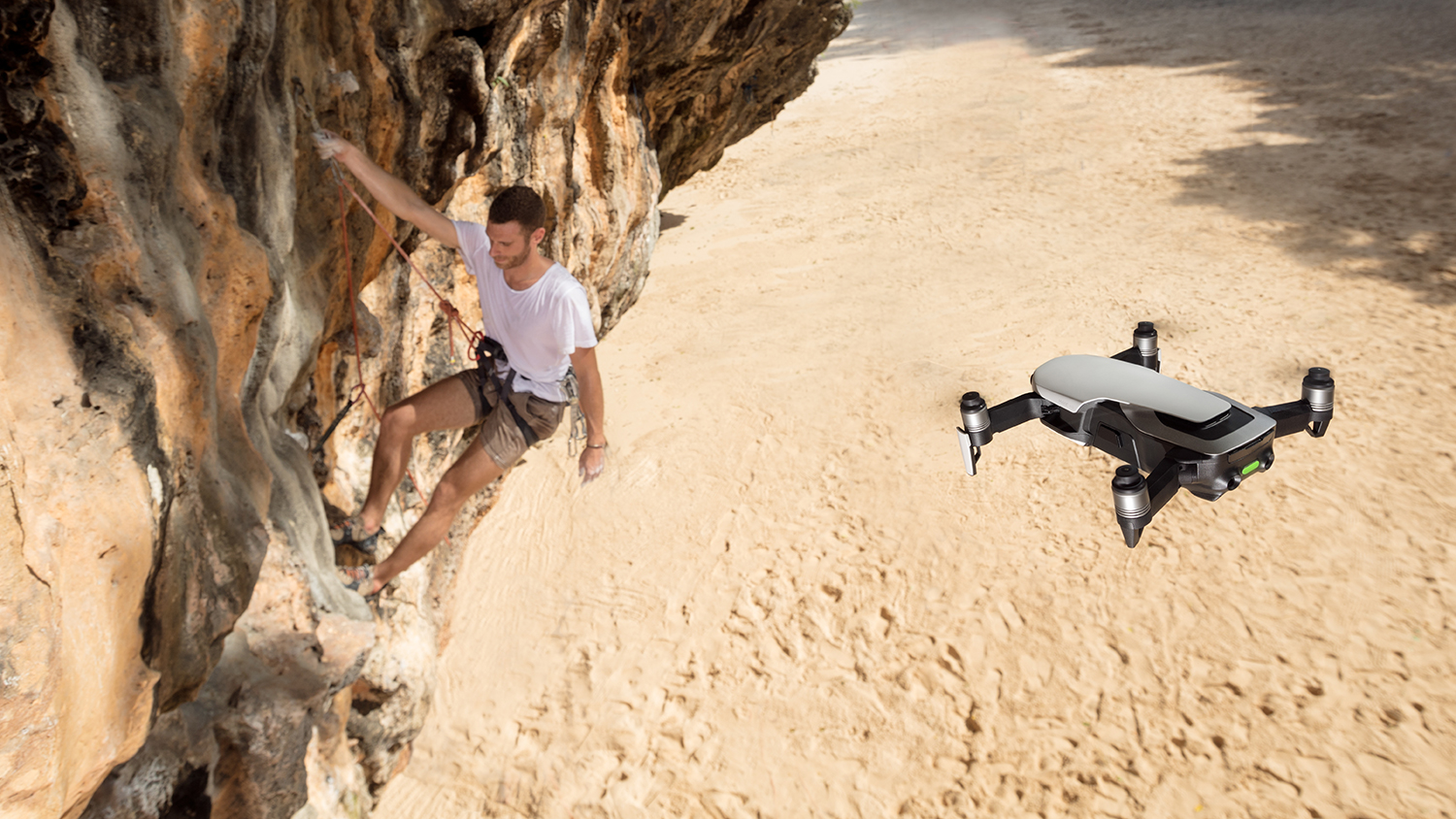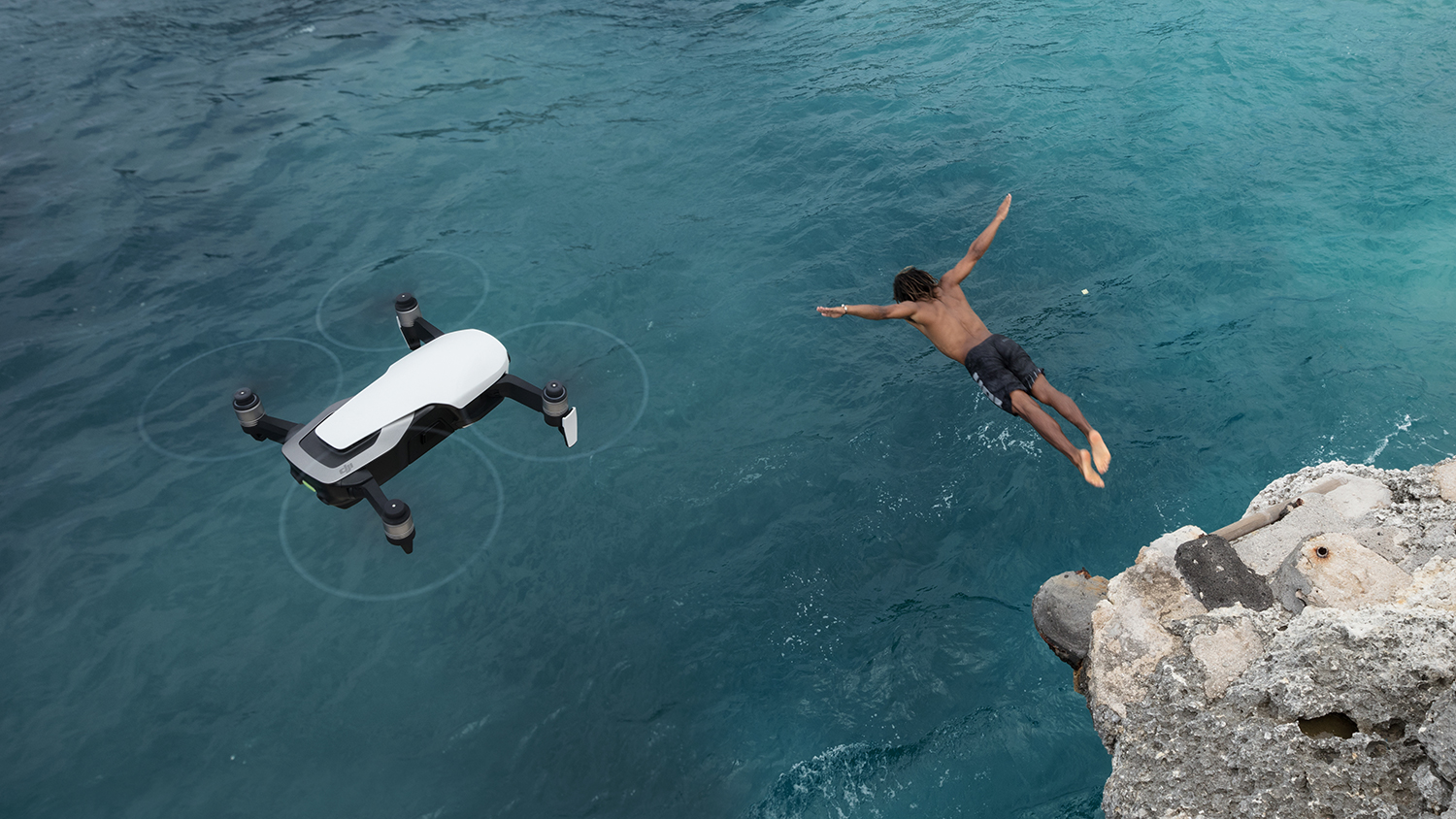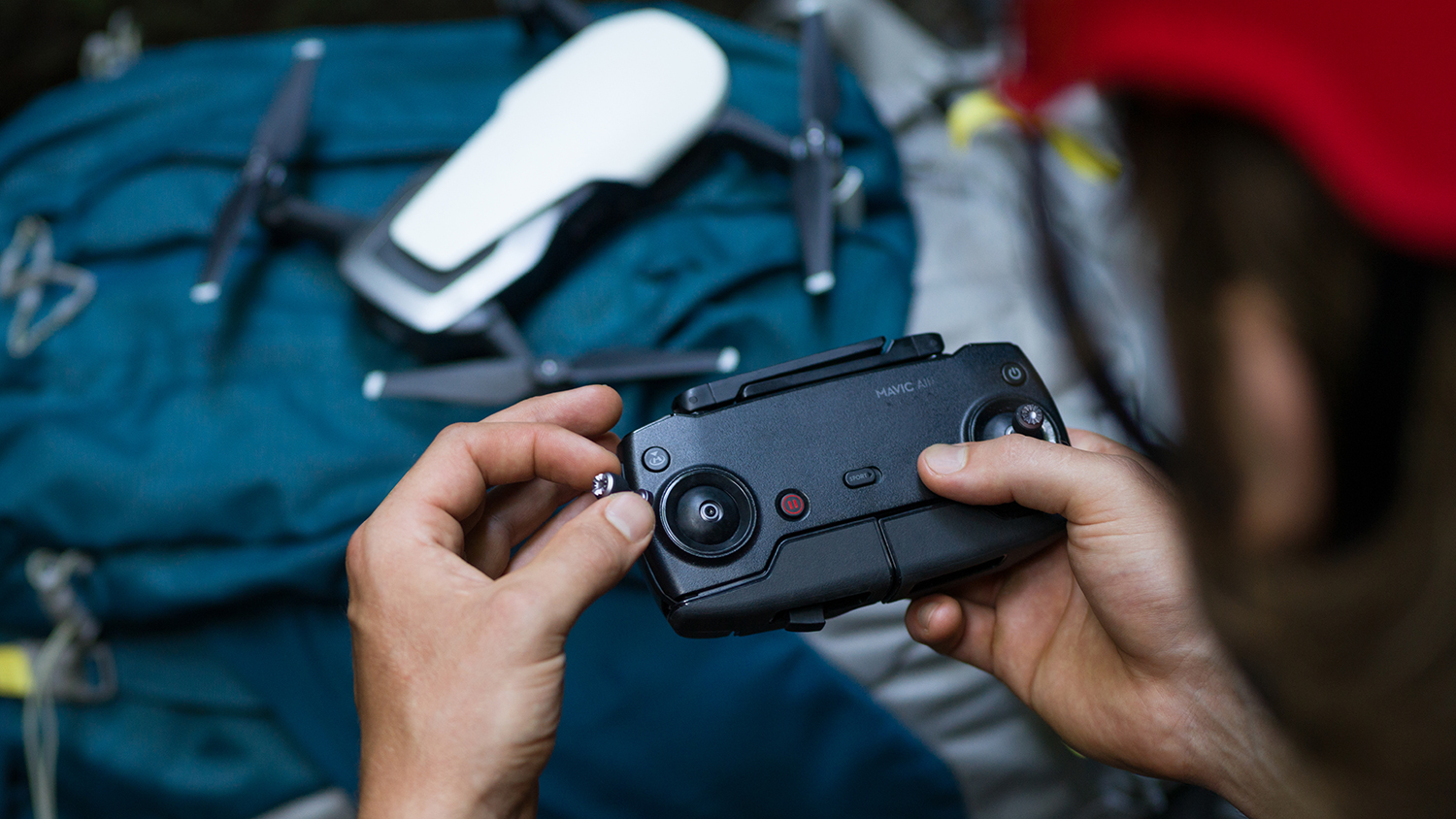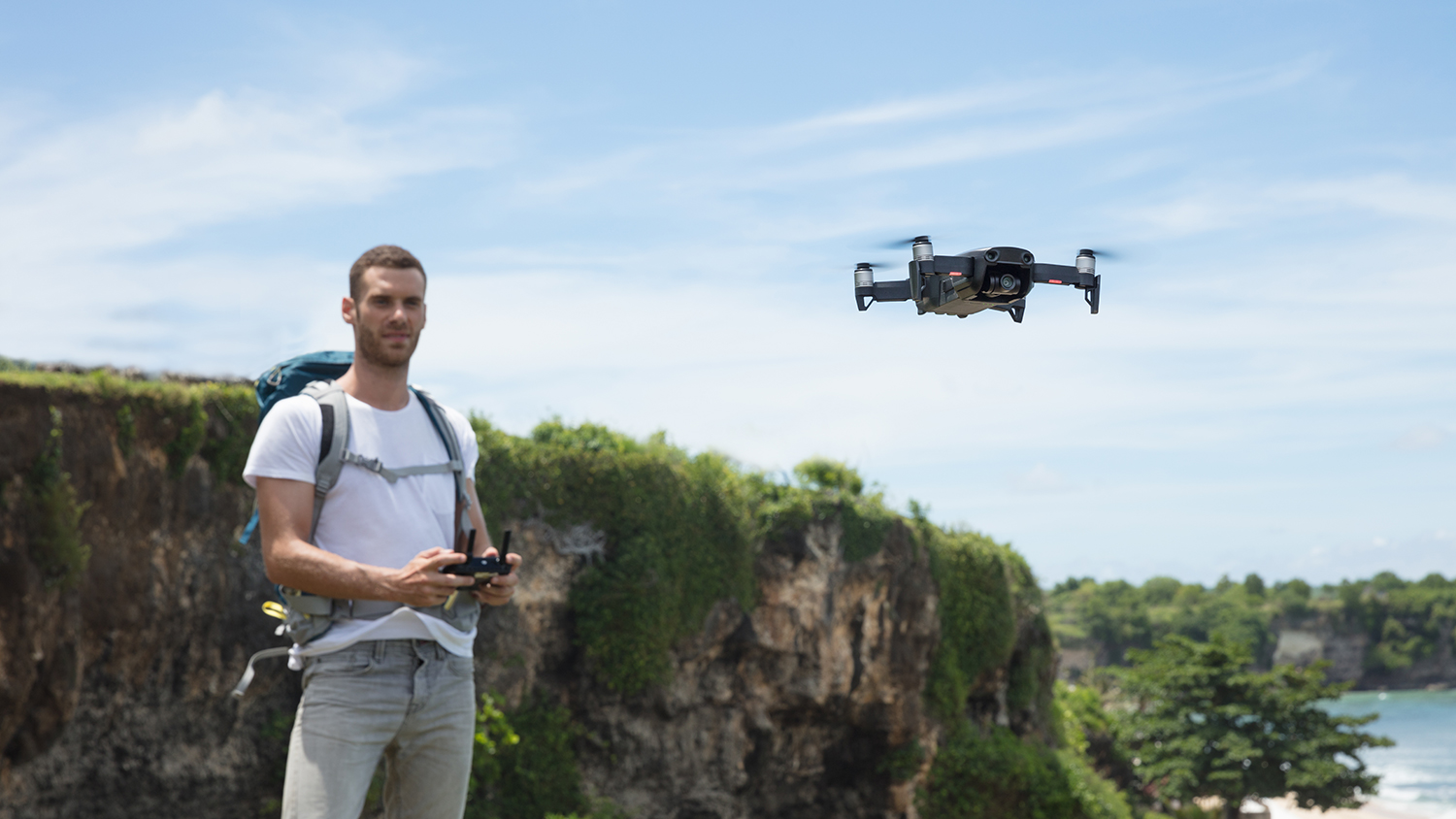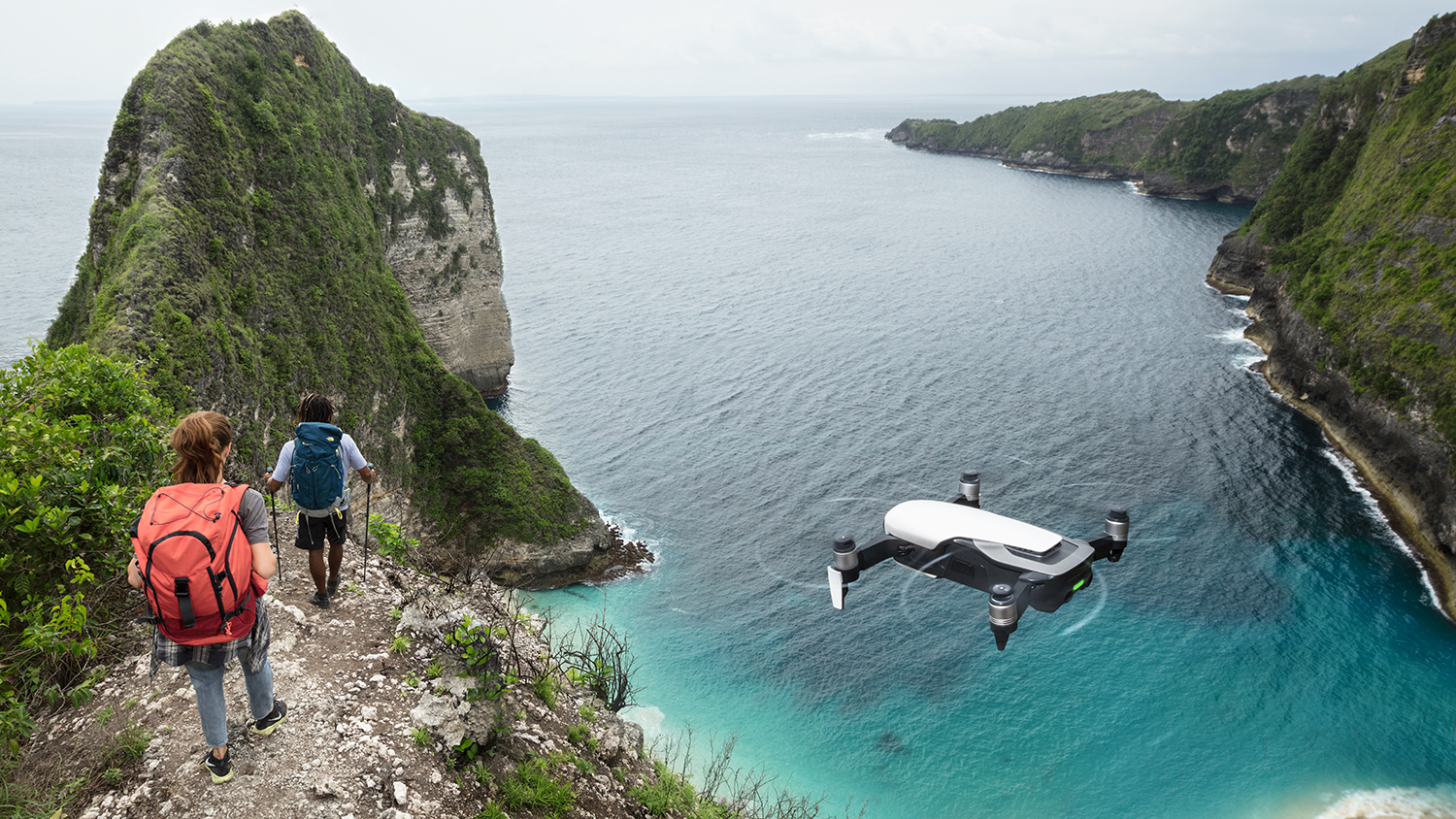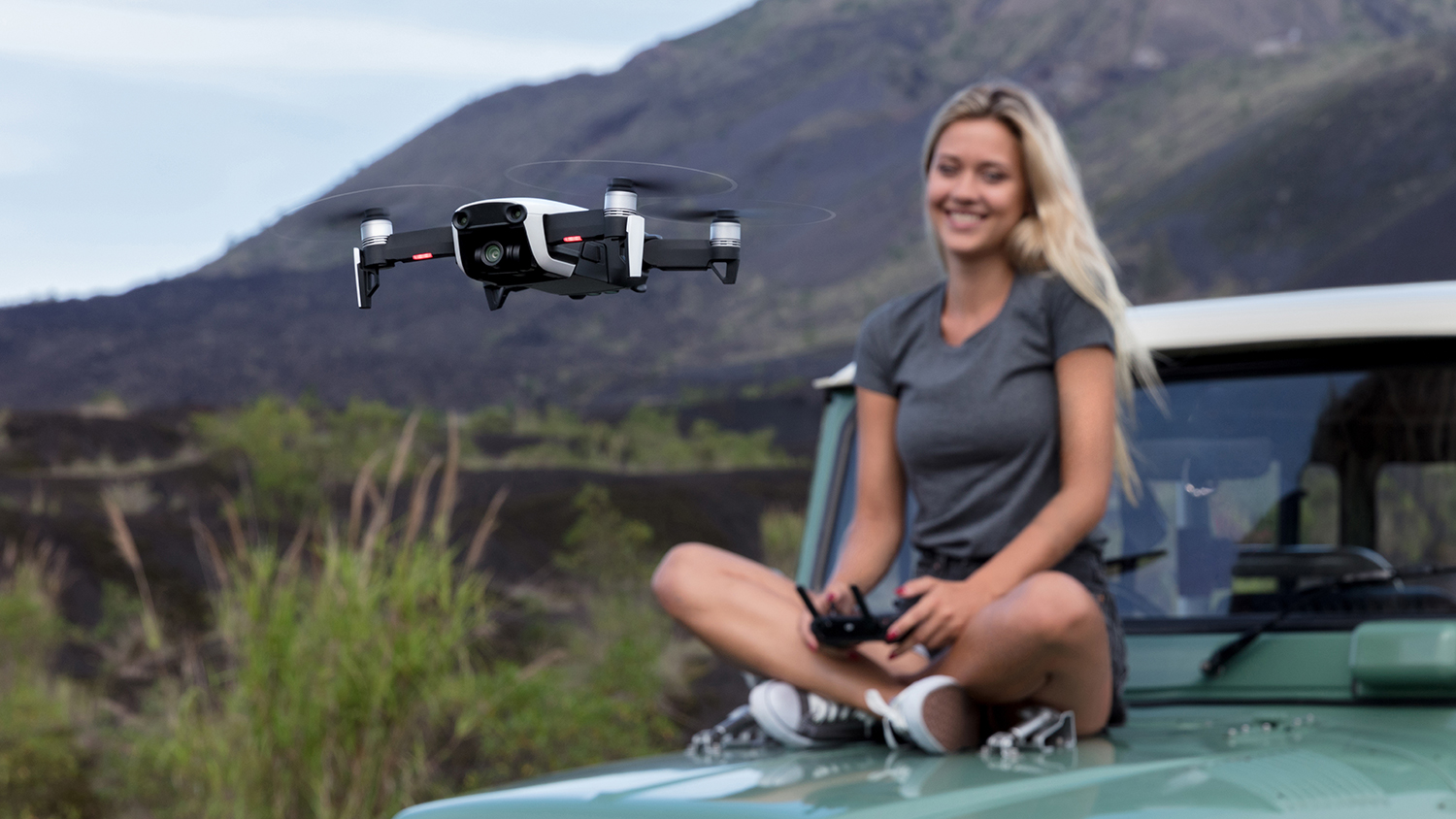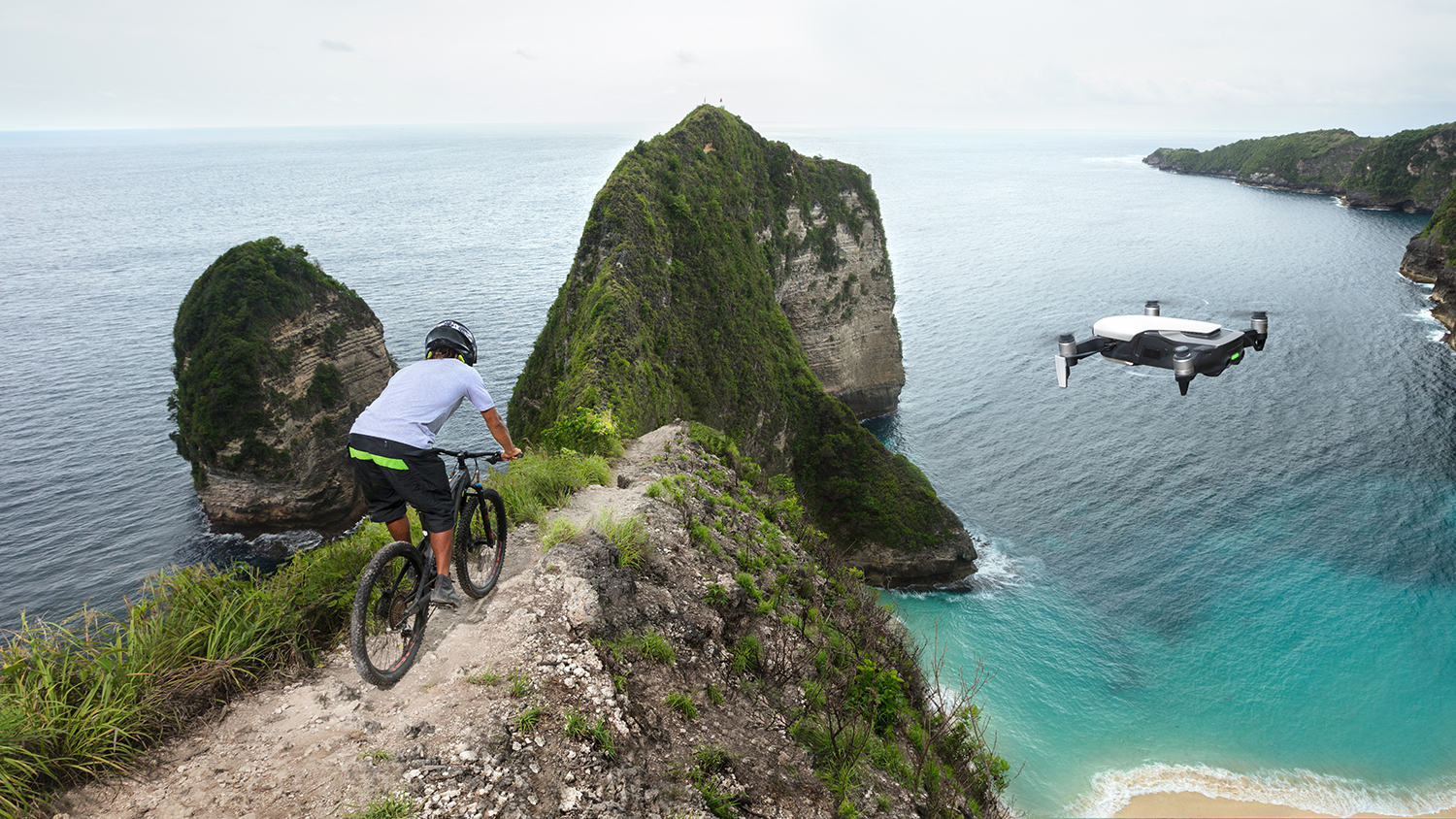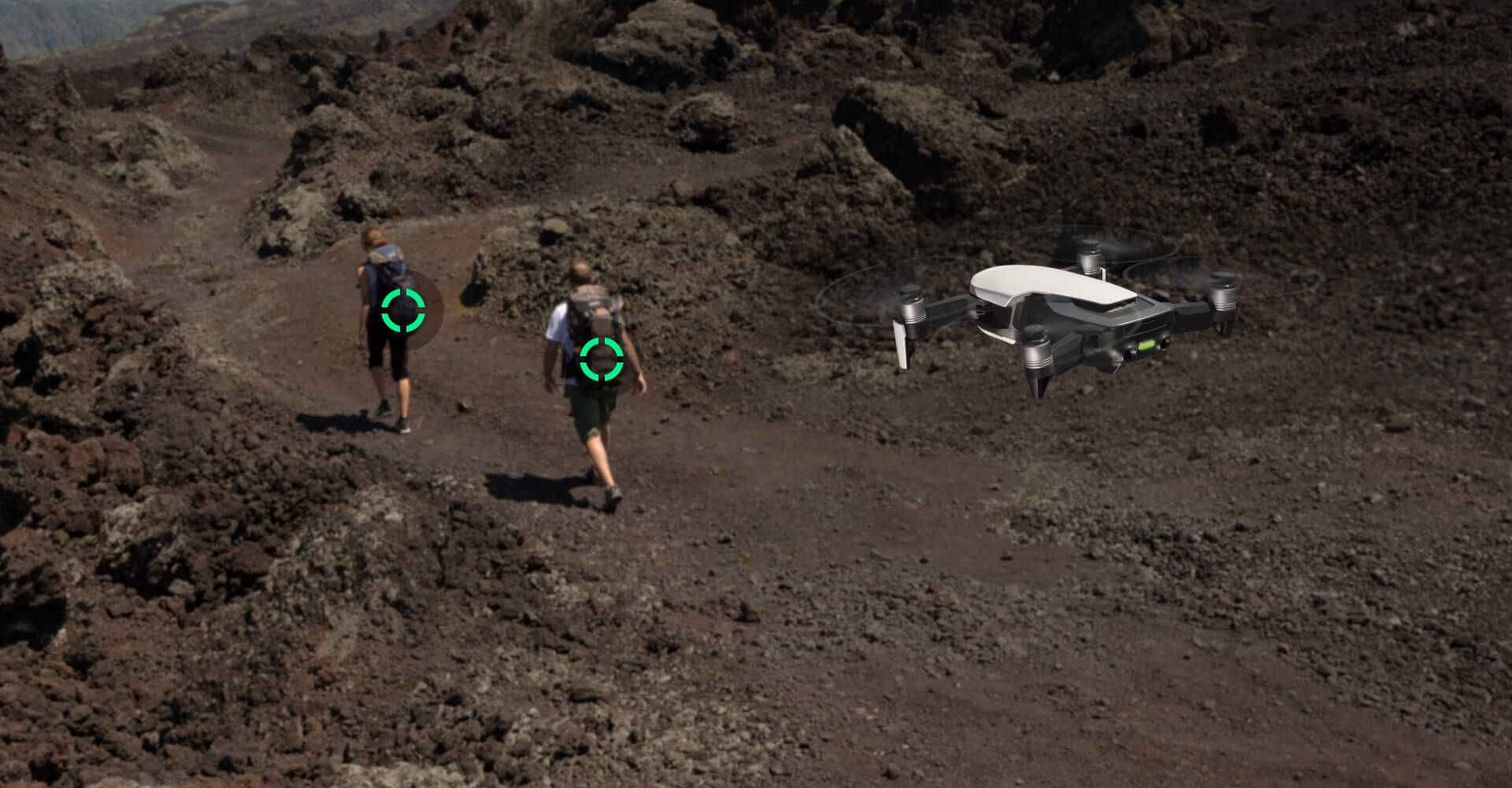Much like it’s predecessor, the Mavic Air is designed with portability in mind — but it takes things to a completely new level. Thanks to its compact form factor and folding arms, the Air is not only half the size of the Mavic Pro, but also 41 percent lighter. During the unveiling event, DJI’s Managing Director Michael Perry pulled not one, but three Mavic Airs out of the pockets of his vest.
Amazingly, despite this impressively small size, the Mavic Air is somehow smarter and more capable than the Pro. It sports a seven-camera vision positioning system, which allows it to map the area around itself while it flies, and use that map to sense and avoid obstacles. Plus, in addition to DJI’s standard suite of intelligent flight modes, the Mavic Air will ship with DJI’s new-and-improved Active Track and Quickshot functions.
The new Active Track is essentially just more accurate, responsive, and easy to use. Users will be able to track multiple subjects simultaneously, and simply tap on subjects to begin tracking them (in previous versions, you had to draw a box around whatever you wanted the drone to follow).
The Mavic Air will also sport three new Quickshot modes: Panorama, Boomerang, and a crazy new one called Asteroid. In Panorama, the drone autonomously snaps and stitches a series of photos together to create a wide, sweeping shot. With some software magic, it can even create a “spherical panorama,” which folds the shot into a neat-looking globe shape. In Asteroid mode, the drone creates one of these spherical panoramas, then zooms back down to you. The end result is a fake (but admittedly cool) super-zoom effect that ends with a selfie. Check out the video to see it for yourself.
DJI definitely didn’t skimp in the camera department either. Thanks to its 1/2.3 CMOS sensor and 34mm lens, the Mavic Air is capable of shooting 13 megapixel stills, and 4K video at 30 frames per second. Better yet, the camera itself sits inside a new-and-improved 3-axis gimbal that not only provides stabilization, but also helps protect the camera during flight and transport (which was an issue with the Mavic Pro).

To top it all off, the Mavic Air can also fly faster and longer than the Pro. It tops out at 42.5 miles per hour, and can stay airborne for 21 minutes on a single charge. Oh, and did we mention it also has 8GB of internal storage? This little guy is jam-packed with features.
If you’re interested in getting your hands on one, DJI has opened up pre-orders today. You can snag the base package for $799, or dish out $999 for the Combo Pack, which includes additional accessories and attachments. DJI expects to begin shipping by January 28.
